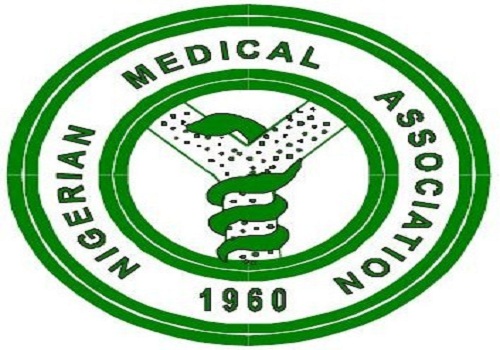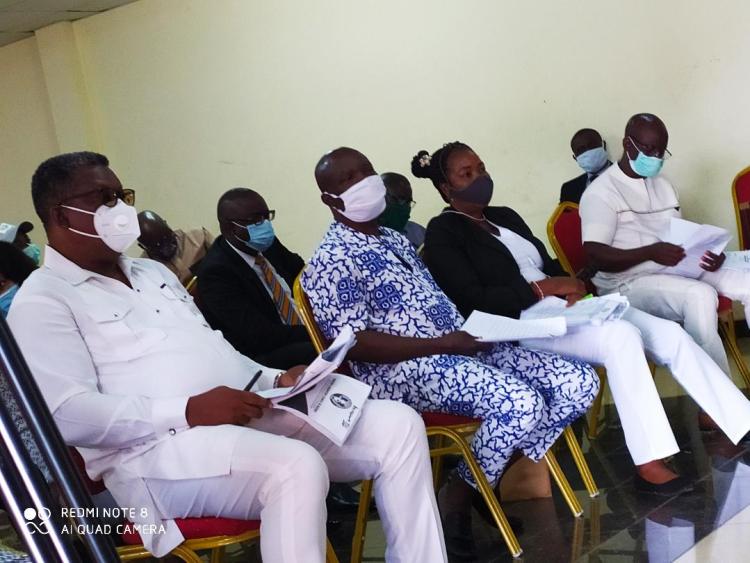Psychiatry likes to portray itself as a scientific discipline, and indeed there is a lot of useful science to draw on when evaluating the evidence base connected to mental health problems, its causes and treatments. Sadly, most of the mainstream psychiatric literature of recent decades has shown a marked preference for rhetoric over scientific accuracy. Research and discourse in psychiatry are now dominated and infected by scientism — the promotion of a belief, sometimes intentionally, sometimes not, that because what you do and talk about sounds and looks like ‘science,’ it is ‘scientific’ — rather than a rational engagement with the nature and consequences of the actual scientific findings.
This scientism has sometimes scared critics from engagement with the actual science in preference of critiquing the suitability of using scientific reasoning to understand what we today define as ‘mental health.’ Opening the lid on both issues (the lack of engagement with the actual scientific findings and the suitability of using particular scientific methods for all knowledge generation) is important. We must endeavour to make transparent the grand deception that organisations such as the one I belong to (the British Royal College of Psychiatrists) are selling to the public about the nature of what we have come to call ‘mental illness,’ its causes, its treatments, and the way we should organise services to help those who become mentally unwell.
Science and Evidence Based Medicine (EBM)
Science is generally regarded as the intellectual and practical activity encompassing the systematic study of the physical and natural world through observation and experiment. Science uses a methodological approach involving hypothesis generation and then testing the hypothesis through empirical methods. The best scientists can live with and accept uncertainty as a prerequisite to being objective in the pursuit of knowledge.
Knowledge develops and builds through generating a hypothesis (often using results from previous research) and then carrying out an investigation aimed at proving that something called a ‘null hypothesis’ can’t be true. The null hypothesis is a general statement or default position that there is no relationship between certain measured phenomena. Rejecting or disproving the null hypothesis — and thus concluding that there are grounds for believing that there is a relationship and the actual hypothesis may be true — is a central task in the modern practice of science.
One of the major problems with the current concepts used in psychiatry can be understood by going back to the basic assumptions on which much of psychiatric research rests. In order to scientifically evaluate the proposition that there is a natural category of dysfunction/disorder called, for example, ‘Attention Deficit Hyperactivity Disorder’ (ADHD), we must start with the null hypothesis. That is, we must assume, until proven otherwise, that there is no characteristic relationship between what we are defining as ADHD and some identifiable measurable biological/neurological feature (if, for example, we wish to categorise ADHD as a ‘neurodevelopmental’ disorder).
This is a foundational assumption behind the development of knowledge through the scientific method. Applying scientific methodology is the basis of evidence-based medicine (EBM. Until we have demonstrated that this basic null hypothesis can’t be true, then scientifically, we cannot proceed with research that assumes that ADHD as a concept has explanatory power for the behaviours it describes.
In its broadest form, EBM is an approach to improving healthcare that uses the application of the scientific method for decision-making. For much of its history, the field of medicine relied more on the subjectivity of ‘clinical judgement’ and medical students learned this or that professor’s favourite ideas. Practice developed more through anecdote and the assumed authority of the ‘doctor’ or ‘professor,’ often with little supporting evidence.
The shift to greater use of scientifically generated knowledge occurred during the eighties and nineties, with greater attention being paid to research on aetiology and treatment, alongside the development of international institutions such as the Cochrane Collaboration, dedicated to systematically evaluating research evidence on important clinical questions. New approaches (such as meta-analysis and systematic reviews) enabled researchers to pool results of a large number of studies, contributing to the development of a comprehensive evidence base. EBM was an important step forward in developing a more scientifically credible approach to healthcare practice.
However, like all great ideas, it exists within a broader political framework. Scientific endeavour is ultimately a human activity and thus what counts as ‘science’ and how we interpret it is shaped by broader cultural and political processes. As has been widely written about, pharmaceutical companies, to give one example, were able, through a variety of strategies, to bias the evidence base toward the products they made. EBM itself fell victim to these broader political forces of market power, leading to a corrupting collusion between profit-focused organisations and professional guilds (such as the American Psychiatric Association).
Marketing triumphed over science. EBM too became susceptible to being afflicted with ‘scientism.’ In Western culture, science has become a cosmology — that is, an ideology/faith that believes that science has an undeniable primacy over all other ways of seeing and understanding life and the world — making us vulnerable to being taken in by scientism. We want to believe there are easy explanations and simple ways to alleviate suffering. Marketing the promise of psychiatric diagnoses and medicinal treatments turned out to be relatively easy.
 Psychiatric Scientism
Psychiatric Scientism Mainstream psychiatry has been afflicted by at least two types of scientism. Firstly, it parodies science as ideology, liking to talk in scientific language, using the language of EBM, and carrying out research that ‘looks’ scientific (such as brain scanning). Psychiatry wants to be seen as residing in the same scientific cosmology as the rest of medicine. Yet the cupboard of actual clinically relevant findings remains pretty empty. Secondly, it ignores much of the genuine science there is and goes on supporting and perpetuating concepts and treatments that have little scientific support. This is a more harmful and deceptive form of scientism; it means that psychiatry likes to talk in the language of science and treats this as more important than the actual science.
I have had debates with fellow psychiatrists on many aspects of the actual evidence base. Two ‘defences’ have become familiar to me. The first is use of anecdote — such and such a patient got better with such and such a treatment, therefore, this treatment ‘works.’ Anecdote is precisely what EBM was trying to get away from. The second is an appeal for me to take a ‘balanced’ perspective. Of course each person’s idea of what is a ‘balanced’ position depends on where they are sitting. We get our ideas on what is ‘balanced’ from what is culturally dominant, not from what the science is telling us.
At one point, to many people, Nelson Mandala was a violent terrorist; later to many more people, he becomes the embodiment of peaceful reconciliation and forgiveness. What were considered ‘balanced’ views on him were almost polar opposites, depending on where and when you were examining him. Furthermore, in science, facts are simply that. Our interpretations are of course based on our reading of these facts. Providing an interpretation consistent with the facts is more important than any one person’s notion of what a ‘balanced’ position should look like.
Looking at the actual evidence provides a worrying picture for mainstream mental health services’ real world effectiveness. Although over-diagnosis and unnecessary care is recognized as a growing problem across medicine, the short and long term outcomes for many conditions dealt with by the rest of medicine have improved, often reflecting genuine technical advances. This is not the case in mental health.
Research from a number of countries has found that despite continuous growth in the availability of mental health services, only about 15-25% of those referred significantly improve or recover. This dismal picture is found in both child and adult mental health services. Non-attendance rates and numbers of people dropping out of treatment are also substantial. There has been a steep rise in the number of youth and adults categorized as disabled mentally ill in most Western countries. In the UK, recent research found that mental disorders have become the most common reason for receiving disability benefits, with the number of claimants rising by 103% from 1995 to 2014, whereas claimants with other conditions fell by 35%. Most people who attend standard community mental health services, it seems, experience either no lasting improvement or deteriorate.
In order to ‘cover up’ this disastrous state of affairs we have created an idea that the conditions we deal with are ‘chronic.’ This provides a framework for accepting as unproblematic the expanding numbers of people categorized as mentally ill, who don’t seem to get better or keep relapsing despite our treatments, without feeling that it is, at least in part, the fault of our concepts and treatments. Thus, I know of colleague psychiatrists in adult services with case loads of several hundred patients. They are overwhelmed and all they can manage are 20-minute medication reviews once every six or so months for patients who never get discharged.
This picture of poor real world outcomes may be exacerbated by one of the signs of ‘scientism’ found in psychiatry — the belief that there is such a thing as a psychiatric diagnosis. It is fairly straightforward to demonstrate that the concept of psychiatric diagnosis is scientism, as from a logical/technical perspective, there is no such thing as a psychiatric diagnosis (apart from some forms of dementia and a few other known organically based conditions that sometimes are encountered by psychiatrists). In medicine, diagnosis is the process of determining which disease or condition explains a person’s symptoms and signs. Diagnosis therefore points to causal processes. Making an accurate diagnosis is a technical skill that enables effective matching of treatment to address a specific pathological process.
Pseudodiagnoses, like for example ADHD, cannot explain behaviours as there are only ‘symptoms’ that are descriptions (not explanations) of behaviours. Even using the word ‘symptom’ may be problematic, as in medicine ‘symptoms’ usually refers to patients’ suffering/experience as a result of an underlying disease process and is therefore associated in our minds with a medical procedure leading to an explanation for the ‘symptom.’ But psychiatric diagnoses do not explain symptoms.
Consider the following example: If I were to ask the question “what is ADHD?” it is not possible for me to answer that question by reference to a particular known pathological abnormality. Instead I will have to provide a description, such as ADHD is the presence of the behaviours of hyperactivity, impulsivity, and poor attention (plus a few extra qualifiers such as age of onset).
Contrast this with asking the question “what is diabetes?” If I were to answer this question in the same manner by just describing symptoms such as needing to urinate excessively, thirst and fatigue, I could be in deep trouble as a medical practitioner as there are plenty of other conditions that may initially present with these symptoms and diabetes itself may not present with these symptoms in a recognizable way. In order to answer the question “what is diabetes?” I have to refer to its pathology involving abnormalities of sugar metabolism. I would get independent (to my subjective opinion) empirical data to support my hypothesis about what may be causing the patient’s described experiences (such as testing the urine and/or blood for levels of glucose). In the rest of medicine, therefore, my diagnosis explains and has some causal connection with the behaviours/symptoms that are described. Diagnosis in that context sits in a ‘technical’ explanatory framework. In psychiatry, what we are calling diagnosis (such as ADHD) will only describe but is unable to explain.
The problem of using a classification like ADHD to explain an observed set of behaviours (i.e., as a diagnosis) can be illustrated by asking another set of questions. If I were to ask “why” a particular child cannot concentrate, is hyperactive and shows impulsivity and I were to answer that these behaviours are caused by ADHD, then a legitimate question to ask is “how do you know that they are caused by ADHD?” The only answer I can give to that question is that I know it’s ADHD because the child is presenting with hyperactivity, impulsivity and poor attention. In other words, if we try to use a classification that can only describe in order to explain, we end up with what philosophically is known as a ‘tautology.’
It is troubling when doctors use a descriptive category like ADHD to explain and cannot see this problem of tautological circularity. Using ADHD to explain the behaviours of ADHD is like saying the pain in my head is caused by a headache. If we don’t communicate to patients the difference between a descriptive and diagnostic classification, the effects can be profound, affecting the patient’s identity and how those around her view her. Furthermore, the idea that a diagnosis like ADHD explains behaviour risks undermining our ability to attend to a whole host of other real-life factors that may have an important role to play in the development of a problem, or to find positive ways forward beyond the focus on reducing what are considered ‘symptoms’ that is typical of many medical-style interventions.
It should be easy to see that once we start interrogating basic assumptions, such as the validity of psychiatric diagnoses, then much of the literature built on such assumptions lacks validity. As ADHD is not a medical diagnosis, but a descriptive classification, we have no reliable empirical method for defining ‘caseness.’ The definition of what qualifies as a case is thus arbitrary and depends on the standards employed by the diagnoser, influenced by whatever prevailing ideology concerning diagnosis they have been exposed to. As a result we cannot eliminate wide variation in ‘diagnostic’ practice.
Psychiatry keeps faith in scientism despite these obvious flaws because we live in a culture where technology and technological achievement are highlighted and promoted, and because this connects with that broader ‘cosmology’ that wants to use ‘science’ to explain everything. In order to have metaphorical and literal purchase in our society, we are inclined to use technological/scientific-sounding language.
With this type of scientism (science as a system of faith) so prevalent, eventually what the science says is almost irrelevant as long as you can look like you are doing something that you call science and you can bullshit in a way that convinces others (who are excluded from language and the actual findings) that the knowledge you possess is based on a ‘truth’ (because you are a scientist and you do science). The hidden assumptions disappear and get taken for granted the more you just repeat phrases like “ADHD is a…,” “ADHD is caused by…,” “the treatment for ADHD is…” etc. As Michel Foucault and others point out, this is how institutional power builds up and gets authority to create ‘regimes of truth.’ In this regime, what you do is simply keep repeating phrases like “the evidence says…,” “studies have found…,” “evidence-based practice is…” etc.
The promise that psychiatric diagnoses will ultimately be shown to be like any other medical diagnoses keeps failing to deliver. This became obvious with the publication of Diagnostic Statistical Manual fifth edition (DSM 5), where the authors admitted that despite the DSM originally being designed to allow for research to uncover aetiological features, thus making the labels diagnostic, no markers have been identified. Figures for the reliability of a DSM diagnosis have actually decreased for many of the diagnostic categories. But the American Psychiatric Association generates much income for its organisation through publishing new DSM editions. As long as that’s the case, then perhaps the scientism that it embodies matters little to them. It should, though, matter to everyone else.
Beyond Psychiatric Scientism
I often wonder what might happen if we became more curious about differences in practice and outcome. For example, in the UK, as a community child and adolescent psychiatrist, I have a particular geographical patch, which has much deprivation, for which I am the responsible consultant. I hold a caseload of around 50–60, see young people and families for one-hour sessions and for some that can be once a week at times. Most (but not all) of the people I see improve and are discharged, and so I am free to do therapeutic work with more people as well as having time to receive and provide supervision and support to and from the team I work alongside. Very few of the people I see are on medication, and with those who are, it is often because I inherited them from another clinician who had initiated the medication.
I am aware that this picture is not one that most of my consultant colleagues in UK community child and adolescent psychiatry (who will also have a similar sized geographical patch) would recognize these days. Like their colleagues in adult psychiatry they also often end up accumulating cases, most of whom will end up being prescribed medication, as sadly, this has increasingly come to be viewed as the role of the psychiatrist. Caught in a system that traps you like that, I think it’s very hard for change to come from within the profession. I suspect that psychiatry ultimately will be forced to change by pressures from outside, particularly if the focus is shifted to the poor record of outcomes at the cost of high levels of harm that comes from the focus on ‘medical’ interventions.
The problem for critics like me and critical organizations (such as the Critical Psychiatry Network, a UK-based group I am part of) is at least twofold. First, we cannot match the power and influence that comes from resource-rich bodies like the pharmaceutical industry; hence we have only been able to make marginal differences. Secondly, as individuals, those of us who go against what are considered the ‘standard’ institutional expectations of psychiatrists may be at risk from employers persecuting their practice. I have previously had to robustly defend myself from accusations of incompetence by colleagues with more power than me, and I know of other critically-minded consultants who have had to do the same.
Nonetheless, as the old saying goes, “you can fool some of the people all the time and all the people some of the time, but you can’t fool all the people all the time.” Resistance movements have often been going for decades before a significant moment when enough of a ‘critical mass’ arrives. We don’t know when or how that moment will arrive, but we need to be ready for its inevitability, as this particular house of cards will eventually have to come toppling down. We must also be ready for the house to come tumbling down for the wrong reasons and with potentially harmful outcomes. If it becomes about saving money, vital supports for patients could be withdrawn. If patients are suddenly taken off medications without having an understanding of the biological and psychosocial consequences for them, harms may result.
Paying attention to the science tells us that we need to look beyond just a focus on formal services. People are people whether or not they experience states of mind we associate with mental illness. People need connection and meaning as well as basics such as safety, housing, and work. In services, the evidence tells us that relationship is Queen. Services will have to dispense with diagnosis and focus on prioritising and operationalising collaborative models. The science has already pointed to what is likely to be most helpful to people who suffer mental distress. The challenge is to make the transformation that is needed happen.
In this article I have given the briefest review of the nature of scientism in psychiatry. In future blogs I will look in more detail behind particular ‘scientisms,’ including examining common ‘diagnoses’ used in my branch of psychiatry, child psychiatry, such as ADHD, autism, and childhood depression, as well as examining other subjects such as outcomes from treatment and service models.
About The Author:
Sami Timimi, MD is child and adolescent psychiatrist who writes about the Critical Psychiatry movement, an international network of doctors (primarily psychiatrists) who critique current mainstream practice in mental health and are hoping to reform it.
ABUJA: Training Schedule for Basic Life Support BLS, Pediatric Advanced Life Support (PALS), Advanced Cardiovascular Life Support ACLS, First Aid, CPR, AED
PORTHARCOURT: Training Schedule for Basic Life Support BLS, Pediatric Advanced Life Support (PALS), Advanced Cardiovascular Life Support ACLS, First Aid, CPR, AED
LAGOS: Training Schedule for Basic Life Support BLS, Pediatric Advanced Life Support (PALS), Advanced Cardiovascular Life Support ACLS, First Aid, CPR, AED




